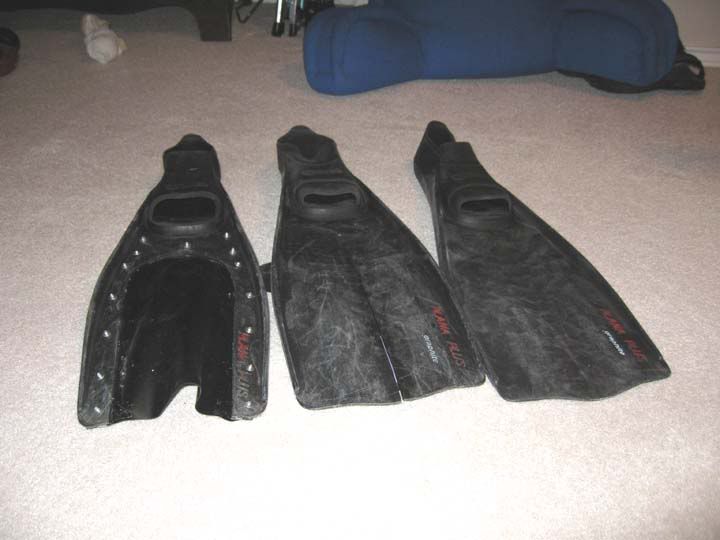Yes, you are missing quite a bit. If you simply go up and down with buoyancy, or drift with a current, then fins probably don't mean too much. But if you swim in a current, pull something heavy off the bottom, or swim a distance, then fins make a whole lot of difference. I typically river dive, and work in very high current situations. A puny fin simply won't allow me to do the things I like to do in the water. If you don't believe how far we've come, take try a pair of Churchill fins if you can find them. You'll see what you have been missing. (By the way, that was a mighty bad choice of words above.)
A while back one fellow put up a pair of Finis zoomers as an example of a wing concept (I think). Well, Finis makes more than these zoomers--they make
monofins, which are the undisputed fastest fins in the water. If you want to see them in action, you can look at the
Texas Finswimming Association's website, which has a video clip made by the Russian Underwater Federation which you should take a look at. The monofin uses a somewhat different theory of propulsion, which involves a long, flat surface with an "S" shaped curve in it which pushes water down the blade. It takes practice to get the kick correct, and make much headway with a monofin. If you want to see the wake turbulence and vortices put out off the monofin, take a look at the other video on the Texas Finswimming Association's website, titled "100m Women's Immersion..." This is an underwater swim with scuba (tank held in front of the finswimmer), so the vortices show in the swimmer's bubbles. I say this as the past (1980s) Director of Finswimming for the Underwater Society of America. When I was Director, the world record for 50 meters apnea (breath-holding) was 14.99 seconds.
It's lower now.
This morning I took my three pairs of Plana fins to the pool. I had the original fins, the ones with a split modification, and the ones I modified into the scoop design. I swam in a 25 yard pool, two lengths for time, five times per set, and three sets (each with a different pair of fins). I swam only the dolphin kick. I counted the number of strokes and the time of the swim for each one, and recorded them. I tried very hard to keep the same level of effort on each of the swims, and used the same turn (a flip turn). Here are the fins I used:
The results are that the split fins were slightly faster than the blade fins, but not significantly so. The average number of strokes and times were as following:
Fin type.......................
Strokes........................
Seconds
Flat...............................30.8............................43
Split..............................30.2............................43
Scoop............................29...............................40
In a mile swim, the scoop would have beaten (had I been able to keep up the same effort for a mile) both the flat blade and the split by 1.76 minutes. The scoop fin would have used about 63 fewer strokes than the blade fin in a mile swim, and 42 less strokes than the split fin.
So now I do have some numbers on the scoop fin. This is a very preliminary evaluation, and based only upon 2 lengths x 25 yards/length x 5 sets = 250 yards of swimming for each set. So the reliability is not there, but it is a start.
SeaRat




